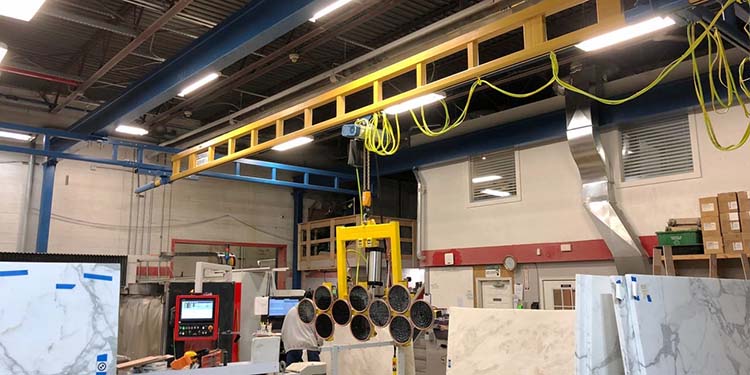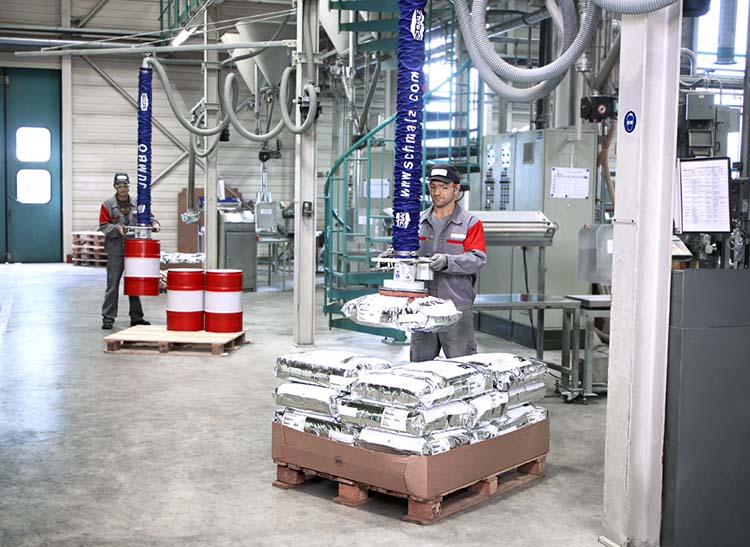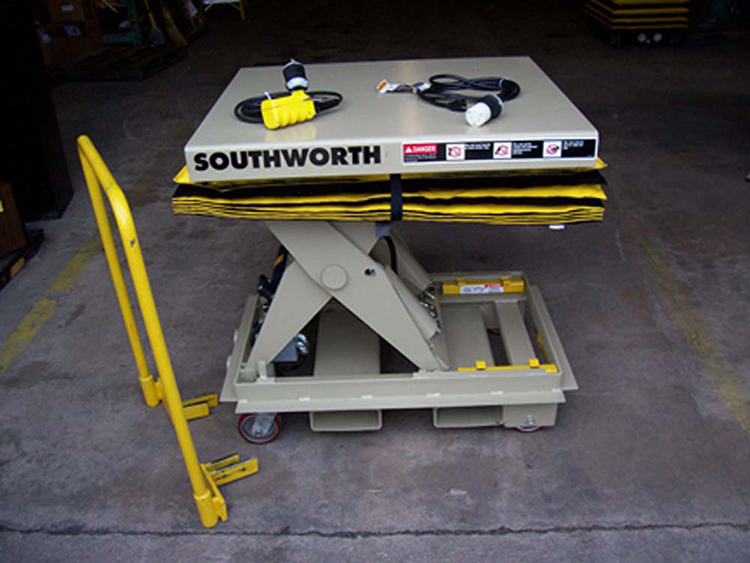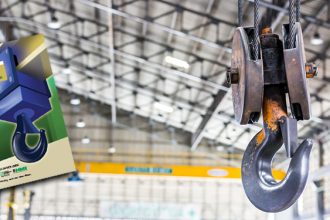Four Ergonomic Lifting Solutions That Cut Repetitive Stress Injury Risks

Workplace injuries can result from a single overexertion incident in which a worker attempts to move, position, or lift a very large, heavy load. However, they can also occur when an employee performs the same task repeatedly. Whether in manufacturing, assembly, or distribution, repetitive motions are among the biggest contributors to workplace injuries. And these injuries can be costly. According to the National Safety Council, overexertion and bodily reaction result in 22% of all non-fatal injuries that necessitate time off from work. Fortunately, there are several ergonomic lifting solutions that cut the risk of repetitive stress injuries.
Common Causes of Repetitive Lifting Injuries

Performing the same action over and over is among the biggest contributors to repetitive stress injuries. Lifting and manipulating the same type of load repeatedly throughout a shift is a frequent culprit, said Rob Beightol, Director of Marketing at Gorbel. The company is a member of the Crane Manufacturers Association of America (CMAA), the Hoist Manufacturers Institute (HMI), and the Monorail Manufacturers Association (MMA). Additionally, Gorbel is a member of the Ergonomic Assist Systems & Equipment (EASE) Council.
“These activities are known as ‘pick and place’ movements. While on the job, workers lift and move light loads in a relatively small space many times throughout the day,” Beightol explained. “Typical examples include placing parts into a machine, loading materials into boxes, or moving production components to areas within a work cell.”
Often, the handled items may only weigh a few pounds. Thanks to that lighter weight, workers may not realize the strains experienced by their bodies as they lift and position the parts or products. Considered in isolation, a 3-pound part may look innocuous, he added.
“However, the cumulative effect of lifting and positioning the same object hundreds of times throughout the work week adds up to significant strain,” he noted. “If you add bending, reaching, or twisting to this type of repetitive work, the toll on the body can become even more significant over time.”
Ergonomic Lifting Solutions Reduce Repetitive Stress

Implementing ergonomic material handling solutions can help to reduce repetitive lifting injury risk, said Beightol. When operations implement ergonomic equipment, workers can perform repetitive tasks with minimal impact on their bodies.
“Ergonomic material handling solutions take the brunt of the forces and strains associated with repeated lifting,” he continued. “Many solutions offered by EASE Council members, for example, can work independently or in conjunction with each other to minimize injury risks.”
Among the available solutions are workstation cranes, intelligent lifting devices (ILDs), vacuum lifters, and lift tables. These types of equipment are frequently combined.
Workstation Cranes Safely Lift, Handle, and Transport Loads

Many facilities are familiar with workstation cranes. These systems help operators lift, lower, handle, position, and move heavy objects both safely and efficiently. Capable of supporting loads up to 4,000 pounds, workstation cranes reduce the physical exertion, fatigue, and risk of injuries associated with lifting and pushing or pulling.
Offered in two primary styles — either floor- or ceiling-mounted — workstation cranes reside in a specific work cell. They can be outfitted with a special attachment, such as an ILD or a vacuum lifter, to connect to the load. Once attached, the crane moves it throughout the work area, reducing the need for a worker to bend, stretch, or strain to manipulate the item.
After raising the load, the worker guides and positions it either manually or via a powered overhead trolley. Either way, the workstation crane significantly reduces the effort required to lift, lower, push, and pull the load. This helps the operation cut workplace repetitive lifting injury risks.
Intelligent Lifting Devices (ILDs) Support Loads for Effortless Positioning

Usable in addition to or in conjunction with lift tables, ILDs alleviate strain by allowing natural movement throughout a designated area. Most of these devices contain a built-in “float” mode that allows the user to guide the material rather than lifting it. While the motion might be repetitive, the worker experiences none of the ergonomic strains associated with handling the load.
Acting as an extension of the worker’s body, ILDs enable free, unconstrained movement. They often attach to a manipulator or overhead track system, depending on the precise needs of the job. Programmable, these devices can limit movement to either only a select area or in a certain height range. This functionality reduces the chances of a worker overextending as part of the job.
Vacuum Lifters Handle Unusually Shaped Items

Equipped with one or more suction cups (also called grippers), vacuum lifters connect to a unit that generates a vacuum by evacuating air. When activated by the operator, the system creates negative pressure within the gripper, allowing the lifter to attach to and pick up the load. Once secured, the worker raises or lowers the load with either a tube system or a chain or wire hoist. After guiding the load to its destination, the employee directs the system to vent, allowing the cup to fill with air and releasing its grip on the load.
Vacuum lifters feature onboard controls that enable the worker to effortlessly adjust the movement and positioning of the item. As an ergonomic material handling solution, these units eliminate the risk of an operator sustaining a lifting injury because they significantly diminish the impact of repetitive movement.
Lift Tables Keep Work at the Optimal Height

Designed to keep the handled item at the optimal level for the worker, lift tables reduce the need for bending throughout the day. These units come in fixed versions mounted permanently in a work cell, and in portable models for transport throughout a facility.
Lift tables are adjustable to accommodate the task at hand, the height of the worker, and the product or component. Multiple variations exist. Some models feature built-in turntables that spin the item to position it closer to the workers. Others have a tiltable top that reduces the need for bending or stretching to reach inside a container. Lift tables can be used in conjunction with workstation cranes, ILDs, and vacuum lifters.

Learn More About Ergonomic Lifting Solutions
Want to find out more about these four ergonomic lifting solutions, and others? Connect with the members of the Ergonomic Assist Systems & Equipment (EASE) Council and of the Crane Manufacturers Association of America (CMAA), the Hoist Manufacturers Institute (HMI), and the Monorail Manufacturers Association (MMA). All four MHI Industry Groups offer expansive collections of resources that help operations keep their workers safe, productive, and efficient.



